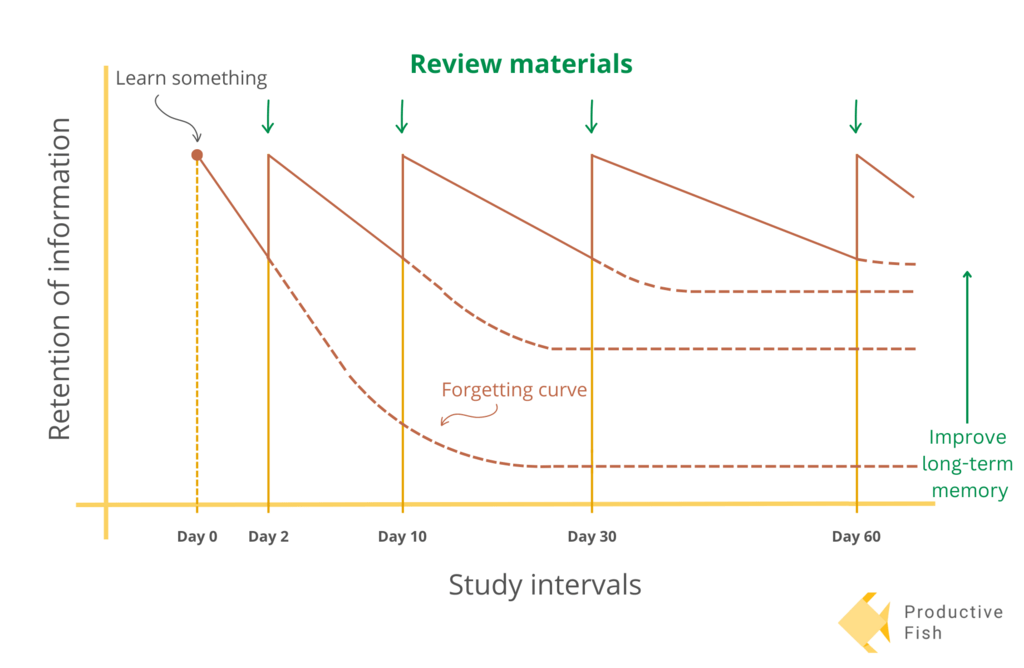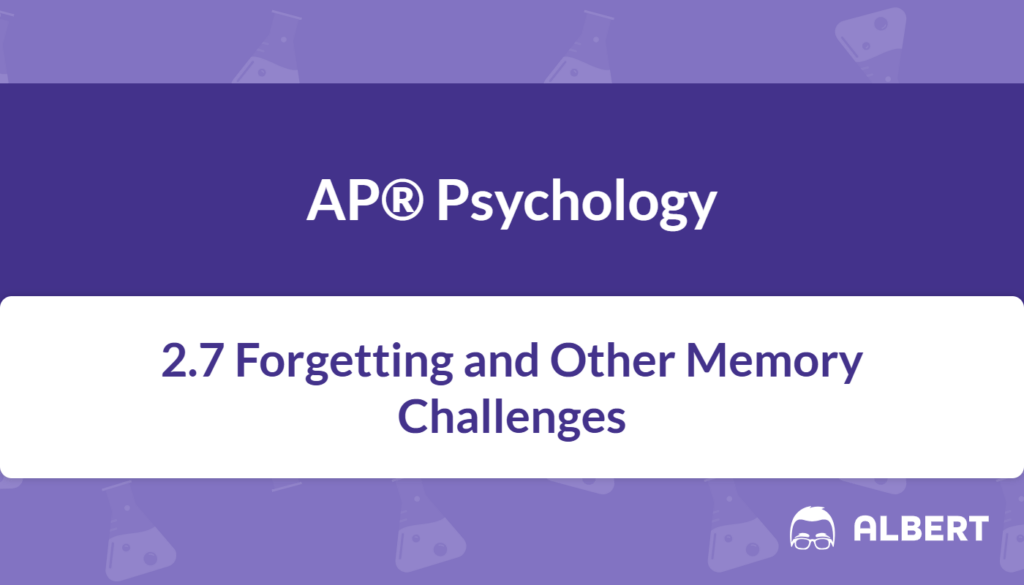Memory plays a crucial role in daily life and academic success. It allows individuals to recall details about past events, store new information, and build on existing knowledge. Yet, forgetting happens more often than many realize, and this can create short-term memory issues or longer-lasting memory challenges. Therefore, understanding why memories slip away is an essential step in improving study habits and boosting long-term learning. This post explores the nature of memory, common reasons for memory failure, and techniques to overcome these obstacles.
What We Review
The Nature of Memory
Memory is the process of taking in information, storing it, and retrieving it when needed. It enables people to apply earlier experiences to new situations. In learning, memory ensures that concepts build on one another rather than starting from scratch each time.
Memory helps students draw on past lessons for tests, class projects, or practical tasks. However, it is useful to remember that memory is not perfect. It is influenced by attention, emotion, and time. These factors, combined with normal forgetting processes, can sometimes lead to memory failure.
The Forgetting Curve
The forgetting curve is a graphical representation of how swiftly memories fade after they are formed. Research suggests that information is lost quickly after initial learning and then levels off over time. This happens because the brain retains only what it deems important, and repeated review helps strengthen neural connections.
One way to visualize memory decay is to think of a plant that needs water. If the plant is not watered regularly, it will wither. In the same manner, if knowledge is not reviewed often, recall becomes more difficult.

A common way to approximate the forgetting curve is by using an exponential decay function:
R(t) = R_0 e^{-kt}- R(t) represents the amount remembered at time t.
- R_0 is the initial amount of information retained.
- k is a constant related to how quickly forgetting occurs.
Example: Tracking Memory Retention Over Time
Imagine a student who learns a new word in a foreign language, such as “Bonjour.”
Step-by-Step Guide
- Immediately after learning “Bonjour,” write it down along with the meaning. This is time t = 0, so R(0) is complete recall.
- After one day, attempt to recall the word without looking at any notes. See whether it is still remembered.
- After three days, repeat step 2.
- Note how memory changes over a week or longer.
Practice Problem:
Predict how the recall level changes if the word “Bonjour” is reviewed once a day versus not reviewed at all.
Step-by-Step Solution:
- When “Bonjour” is reviewed daily, k (the forgetting rate) decreases because the memory trace is refreshed.
- Without review, R(t) drops quickly, so the student will struggle more as time goes on.
- Consistent waterings (reviews) act like repeated study sessions, ensuring that R(t) remains relatively high.
Reasons for Memory Failure
Many memories fail because they are never stored properly, are disrupted by similar memories, or do not have enough cues for retrieval. The main reasons include:
- Encoding failure
- Interference
- Inadequate retrieval
A. Encoding Failure
Encoding means transferring information from short-term to long-term memory. When encoding fails, the information is never stored. Distractions or shallow processing of details cause this problem. In real life, hearing someone’s name without focusing on it often leads to forgetting.
Example: Encoding Failure in Study Habits
Consider a student who passively reads a textbook without taking notes.
Step-by-Step Guide
- The student skims the material but never actively thinks about the key terms or main ideas.
- Because no deeper processing happens, the information does not enter long-term memory.
- On test day, the recall is poor because the content was not encoded well.
Practice Problem:
Suggest an active learning technique to reduce encoding failure while reading.
Step-by-Step Solution:
- Summarize each paragraph in a personal notebook.
- Highlight or underline the key topic sentences.
- Discuss or rehearse the concepts with a friend.
- These steps create stronger mental pathways, reducing the chance of encoding failure.
B. Interference
Interference happens when old or new information disrupts the recall of other learned material. There are two main types:
- Proactive Interference: Old information hinders the recall of new information.
- Retroactive Interference: New information disrupts the recall of previously learned content.
Imagine learning Spanish and then starting French lessons right afterward. The brain might blend vocabulary from both languages, making it harder to keep them separate.
Example: Proactive vs. Retroactive Interference
A student learns Spanish vocabulary on Monday and French vocabulary on Tuesday.
Step-by-Step Guide
- Proactive Case: While trying to recall new French words, older Spanish words come to mind first.
- Retroactive Case: Reviewing French words might erase or jumble the Spanish words learned earlier in the week.
Practice Problem:
Suppose a student learns 10 Spanish words and 10 French words on consecutive days. Which type of interference is at play if the student mistakes a French word for a Spanish one?
Step-by-Step Solution:
- This mixing up of the new French word is caused by older Spanish knowledge, so it is proactive interference.
- The Spanish memory is overshadowing the new French word.
C. Inadequate Retrieval
Sometimes information is stored properly, but cannot be accessed. This issue is often called the “tip-of-the-tongue” phenomenon, where the memory is there but just out of reach. Retrieval cues, such as recalling surrounding details or the context, can help trigger the memory.
Example: Improving Retrieval Techniques
Imagine trying to remember an actor’s name from a favorite movie.
Step-by-Step Guide
- Recall movie details: genre, plot, and co-stars.
- Focus on the context: the time or location where the movie was watched.
- These context clues spark connections, making recall easier.
Practice Problem:
What mnemonic device could help remember an actor’s name from the same scenario?
Step-by-Step Solution:
- Create a simple acronym using the actor’s initials.
- Form a short phrase involving the actor.
- Revisit this phrase each time the movie comes up, reinforcing retrieval.
The Role of Repression
Repression is a concept from psychodynamic theory suggesting that painful or distressing memories can be pushed out of conscious awareness to protect a person’s sense of well-being. While not always accepted by all researchers, many agree that strong emotions can shape whether certain memories are easy or hard to access.
People might unknowingly avoid details that trigger negative thoughts. Over time, these memories become buried, making recall of the event difficult.
Example: Recognizing Repression in Everyday Life
A student fails a big exam and feels intense embarrassment.
Step-by-Step Guide
- The student may unconsciously avoid recalling study materials that remind them of the failure.
- This avoidance can lead to forgetting specific details about the test.
- As a result, the memory feels hazy even though those details are stored somewhere in the brain.
Practice Problem:
List one sign that a repressed memory might be affecting current study habits.
Step-by-Step Solution:
- Consistent feelings of anxiety or discomfort when reviewing a specific subject may hint at a repressed memory related to a previous negative experience.
- Recognizing this pattern could prompt the student to seek help or adopt new study techniques.
The Misinformation Effect
The misinformation effect occurs when misleading information is integrated into the memory of an event. As a result, recall of the original event becomes distorted. This can arise through suggestive questioning or exposure to false details.
A well-known experiment demonstrated that participants’ recollections of a car crash changed based on the words used to describe the accident (e.g., “smashed” vs. “hit”). Such subtle influences can create false memories or alter actual details.
Example: Demonstrating the Misinformation Effect
Imagine a group of students discussing a recent school assembly.
Step-by-Step Guide
- One student claims the speaker wore a red shirt, but the shirt was actually blue.
- Several students adopt this mistaken detail.
- Later, they all confidently remember the shirt as red, revealing the misinformation effect.
Practice Problem:
What is one way to reduce the misinformation effect in group discussions?
Step-by-Step Solution:
- Encourage each member to write down their version of events privately before talking in a group.
- Compare notes and treat discrepancies with caution.
- This technique helps preserve original memories and lowers the chance of adopting false details.
Conclusion
Memory is an ever-changing process that is vital to daily life and learning. The forgetting curve shows that time, interference, and lack of active review contribute to memory failure. Encoding failures and inadequate retrieval also remain common hurdles. Moreover, repression can lead to the unexplained loss of distressing memories, while the misinformation effect can alter what is believed to be accurate.
Exploring these concepts can help students improve their study habits and better understand short-term memory issues or broader memory challenges. By embracing the complexities of memory, learners can apply various strategies—like spacing reviews or creating mnemonic devices—to enhance long-term retention and recall.
Quick Reference Chart: Important Vocabulary and Definitions
| Term | Definition |
| Forgetting | The inability to retrieve stored information from memory. |
| Forgetting Curve | A graphical representation of how information is lost over time. |
| Encoding Failure | Failure to create a permanent storage of the information. |
| Interference | When old or new information hinders the recall of learned material. |
| Repression | A defense mechanism that pushes distressing memories out of conscious awareness. |
| Misinformation Effect | When misleading information is incorporated into one’s memory of an event. |
| Amnesia | A distinct form of memory impairment. |
Remember that consistent study schedules, active participation in learning, and careful consideration of how observed details might be distorted can go a long way in preserving memory accuracy and preventing memory failure.
Sharpen Your Skills for AP® Psychology
Are you preparing for the AP® Psychology test? We’ve got you covered! Try our review articles designed to help you confidently tackle real-world AP® Psychology problems. You’ll find everything you need to succeed, from quick tips to detailed strategies. Start exploring now!
- Encoding Memory: AP® Psychology Review
- Storing Memories: AP® Psychology Review
- Memory Retrieval: AP® Psychology Review
Need help preparing for your AP® Psychology exam?
Albert has hundreds of AP® Psychology practice questions, free response, and full-length practice tests to try out.








